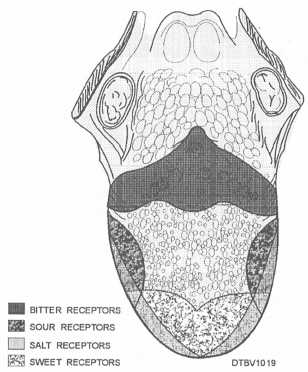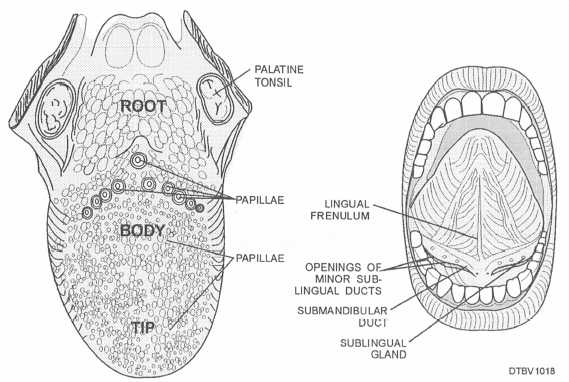mouth but guarding the oral cavity against the ingestion of excessively hot or cold substances.
They also provide a seal for the mouth to keep food and saliva from escaping. The lips help to maintain the position of the teeth and are very important in speech.
TONGUE
The tongue (fig. 3-18) is a vascular, thick solid mass of voluntary muscle surrounded by a mucous membrane (epithelium tissue).
Located on the underneath side of the tongue is the lingual frenulum, which anchors the tongue in the midline to the floor of the mouth.
The tip of the tongue is free moving and can readily change size, shape, and position.
Surface (Dorsal Aspect)
On the surface of the tongue are rough projections called papillae.
They provide the tongue with friction in handling food and also act as taste buds.
Taste Buds
The four types of taste sensations are sweet, sour, bitter, and salty-all resulting from stimulation of the taste buds.
Most are located on the tongue and the roof of the mouth. Figure 3-19 illustrates taste buds of the tongue.

Figure 3-19. - Taste buds of the tongue.
Tongue and Digestion
The tongue is an important muscle in the chewing process.
It crushes food against the palate; it deposits food between the chewing surfaces of the teeth for

Figure 3-18. - Dorsal aspect of tongue (left), anatomy floor of mouth (right).
Continue Reading
